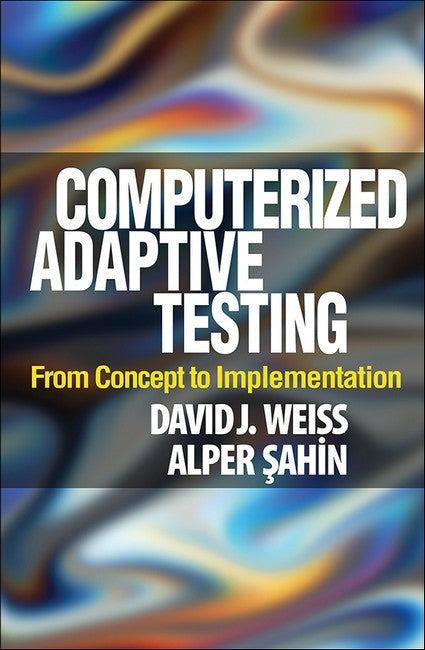David J. Weiss, PhD, is Professor of Psychology at the University of Minnesota. Widely regarded as the father of computerized adaptive testing (CAT), he began his CAT research and founded the Quantitative and Psychometric Methods program at the University of Minnesota in 1970. His subsequent research provided the basis for the development of the CAT version of the Armed Services Vocational Aptitude Battery and a variety of other CAT implementations, including in education, nursing licensure, and personality measurement. Dr. Weiss has been active in CAT research continuously and has trained many leading CAT researchers and implementers. He was the founding editor of the journal Applied Psychological Measurement, and is co-founder and permanent President Emeritus of the International Association for Computerized Adaptive Testing (IACAT). He was the founding editor of IACAT's official journal, the Journal of Computerized Adaptive Testing. Dr. Weiss also co-founded Assessment Systems Corporation and the Insurance Testing Corporation. He is a Fellow of the American Educational Research Association and the American Psychological Association. Alper Sahin, PhD, is Chairperson of the Department of Basic English at Atilim University in Ankara, Tuerkiye, and Director of Education for the International Association for Computerized Adaptive Testing. He conducted his postdoctoral research on computerized adaptive testing (CAT) with David J. Weiss at the University of Minnesota. Dr. Sahin's research interests include sample size requirements in item parameter estimation using item response theory, measurement accuracy in foreign language tests, use of asymmetric rubrics in performance assessment, and item-bank design features in CAT applications.
Request Academic Copy
Please copy the ISBN for submitting review copy form
Description
"This book is great--it is the most easy-to-understand material on CAT I have read. It covers a wide range of research, from the early days of CAT to today. I recommend this book to any student who is interested in CAT, as well as anyone trying to develop a CAT program."--T. Chris Oshima, PhD, Department of Educational Policy Studies, Georgia State University "This book meets a need in the measurement field for a comprehensive introductory presentation of CAT. It covers the basics in an accessible way, while also making clear the range of applications and contexts in which the basic CAT approach can be extended, as well as areas in need of future research."--Daniel M. Bolt, PhD, Department of Educational Psychology, University of Wisconsin-Madison "This comprehensive book on CAT is unique in being an authored work with a coherent style and perspective. It covers all aspects of using CAT, including the development of item banks and operational systems along with the technical details of item calibration, proficiency estimation, and practical requirements, such as exposure control and content balancing. Also included is a historical overview of the development of the concepts underlying CAT. Written at an accessible level, the book does not require a strong background in psychometrics. It is an excellent resource for anyone with administrative responsibility for a CAT system, or for courses in applied measurement."--Mark Reckase, PhD, University Distinguished Professor Emeritus, College of Education, Michigan State University-

